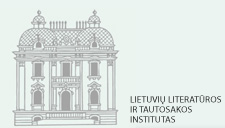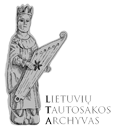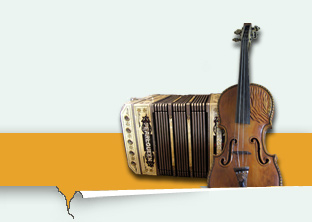  |
 |
|
| Lithuanian Folklore Archive’s Database |  Lietuviškai Lietuviškai |
The Folklore Sound Recordings Database is an especially convenient way for visitors to search for sound recordings made on old audio media such as phonograph cylinders and phonograph discs.
The Lithuanian Folklore Archive’s phonotheque contains the oldest folklore recordings in Lithuania, recorded in 1908–1949 on phonograph cylinders (117 such cylinders have survived to the present day containing 340 pieces), and recordings from 1935–1949 made on phonograph discs (980 discs have survived with over 6700 pieces). It also houses a collection of magnetic tapes (1952–1994) and cassettes (1971-2015), comprising over 8,500 hours of audio recordings. Digital audio files of folklore expeditions, concerts, and events are also housed here.
From 1908–1912, Eduard Wolter, a member of the Lithuanian Science Society together with its chairman, dr. Jonas Basanavičius, traveled around Lithuania’s villages and recorded Lithuanian folk songs and melodies on multi-pipe whistles skudučiai, bagpipe, and a duet of bagpipe and violin for the first time on phonograph cylinders. During the years of Lithuania’s independence the Commission for Gathering Folk Melodies in Kaunas (1934–1935), and somewhat later (1935–1939) the Lithuanian Folklore Archive, acquired a stationary phonograph recorder and began recording folklore works onto the phonograph discs. Zenonas Slaviūnas, who was in charge of the recordings, recorded especially valuable examples of singing polyphonic songs sutartinės, playing of skudučiai and wooden trumpets ragai, as well as old forms of monophonic singing, among others. Since the early 1950s, the repertoire of folk singers and storytellers has been recorded on magnetic tapes, and later onto cassettes. Since 2000, folklore expeditions have used digital recording technology.
In 2001, the Institute of Lithuanian Literature and Folklore launched a long-term program “Preservation and Publication of Archival Sound Recordings,” which involved digitizing the phonograph cylinders and discs. In 2003–2007 the highest quality sound recordings were published in a series of booklets with CDs (edited by Austė Nakienė and Rūta Žarskienė). The Folklore Archive department continues to digitize magnetic tapes and cassettes. When transferring the sound recordings into a digital format the need to register and describe the work carried out became apparent. In 2006, the creation of the Folklore Sound Recordings Database began. In 2010–2012, as part of the project “Lithuanian Folklore Archives: Digitization and Dissemination of Collections,” the design for the database was created, all of the descriptions of the old sound recordings database were uploaded, and a player installed. The database now houses metadata and sound recordings of the phonograph cylinders (LTRF v) and discs (LTRF pl), as well as the metadata of the first couple of thousand magnetic tapes (LTRF mg 1–1963) without sound recordings. It should be noted that one can listen to authentic recordings of sutartinės and instrumental polyphonic works that have been included in the UNESCO Representative List of the Intangible Cultural Heritage of Humanity.
